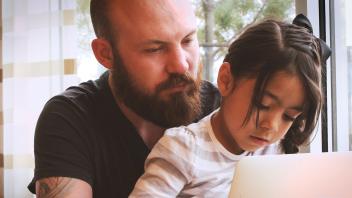A SMART IEP is an individualized education program that is: specific, measurable, filled with action words, realistic and relevant, and time-limited.
Introduction
When a doctor develops a treatment plan for a sick child, the doctor uses objective data from diagnostic tests. Medical specialists use objective data to measure the effectiveness of treatment plans. You want your doctor to use objective data to analyze the effectiveness of a treatment program, not subjective feelings and beliefs.
Your child’s IEP is similar to a medical treatment plan. The IEP includes:
- Present levels of performance from objective tests and assessments
- Measurable goals and objectives
- A plan to address the child’s educational problems
- A statement of how the child’s progress will be measured
Just as a doctor takes measurements to determine how successful a medical intervention has been (e.g., has the patient’s fever gone down), you need objective tests to know that your child is acquiring reading, writing and arithmetic skills.
Use Objective Data to Make Decisions
You are a member of your child’s IEP team. The IEP team must identify and define your child’s problems before the team can develop an appropriate educational plan.
The IEP team will gather information from different sources. This information may include observations of your child in different environments, including the home and classroom. This information includes objective test data that describes your child’s problems, the severity of the problems, and measure your child’s progress or lack of progress.
Use Objective Data to Measure Progress
Jay is an eight-year-old boy who received special education services for two years, beginning in kindergarten. Jay’s parents felt that he was not learning how to read and write like other children his age. The school personnel assured the parents that Jay was making progress.
After two years, a child psychologist in the private sector tested Jay. While Jay’s abilities were in the average to above average range, his reading and language skills were at the kindergarten level. Despite two years of special education, Jay had not learned to read or write.
When a teacher says a child is making progress, the teacher is offering an opinion based on subjective observations. In many cases, teacher opinions and subjective observations are not accurate. If you have concerns about your child’s progress, get independent testing of your child’s reading, writing, and mathematics skills by an expert in the private sector. These test results will tell you if your child is making progress.
Is your child receiving passing grades? Can you rely on grades to measure progress? No. Grades are not objective assessments of progress. Many factors influencegrades, including grade inflation and the teacher’s beliefs and perceptions about the child’s effort, attendance, behavior, and attitude.
You say, “The IEP for my child does not include objective measures of progress. How can the IEP be written differently? How can I tell if my child is actually making progress?”
Example: Kevin Learns to Type
Let’s look at a goal that is written to evaluate a child’s progress subjectively. We will revise the goal to make it a SMART goal that is specific, measurable, uses action words, is realistic and relevant, and time-limited. Kevin is learning to type.
The school’s proposed IEP goal says that Kevin will acquire keyboarding skills. Kevin’s progress will be assessed by “Teacher Judgment,” “Teacher Observation” and “Teacher-made Tests” with a score of “80%” as the criteria for success. This goal does not include information about words per minute or errors.
After we revise this goal to make it specific, measurable, active, realistic, relevant, and time-limited, the goal reads:
By the end of the first semester, Kevin will touch-type a passage of text at a rate of 15 words per minute with no more than 10 errors on a 5-minute test. By the end of this academic year, Kevin will touch type a passage of text at a rate of 35 words per minute with no more than five errors on a 5-minute test.
Example: Megan Learns to Read
Meet Megan, a fifth grader who has not learned to read. Megan’s reading decoding skills are at the 10th percentile level. How will Megan’s parents know if she is benefiting from the special education program? If Megan receives an appropriate education, her scores on reading subtests will improve.
According to Megan’s SMART IEP goal:
After one year of specialized instruction, Megan will be able to decode words at the 25th percentile level as measured by the decoding score of the Gray Oral Reading Test (GORT).
When Megan’s reading skills reach the 25th percentile level, she is making progress. Her progress will be measured with standardized tests. Megan’s next IEP will include new goals and objectives to bring her reading skills up to the level of her peers.
